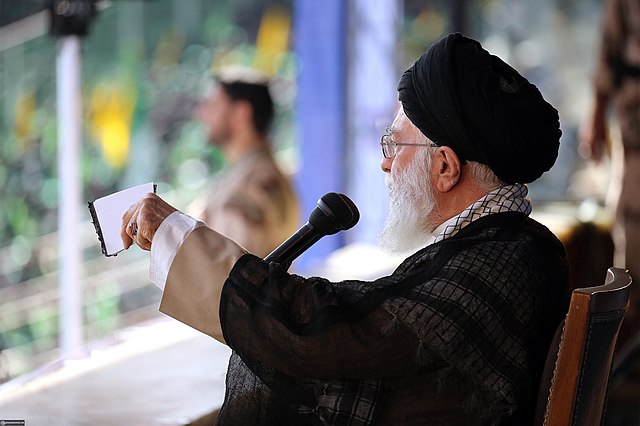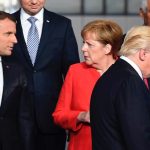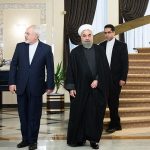By Talal Mohammad
With resonating and echoing chants, “Kilon Yani Kilon,” “Everyone Means Everyone,” Lebanese citizens poured en masse to protest the dire economic situation and political milieu that has plagued Lebanon for decades. Few would think that a tariff on internet application calls, such as WhatsApp and Facebook, would cause such a storm. However, scenes from all across Lebanon reflect a disgruntled nation, reflecting a mood that intertwines celebration with protest against their political status quo. Calls for the resignation of the entire political establishment, including the executive and legislative branches, in addition to state-wide reforms, have transcended religious and sectarian differences.
To understand the current protests in Lebanon, we must look at the underlying causes. Since the end of the civil war in 1990, Lebanon has been struggling with a faltering economy—bad services including intermittent electricity, high levels of unemployment, and austerity—that has led many to leave in search of work abroad. In 2015, the Lebanese people protested the executive and legislative branches” failure to address the overflowing garbage on the streets, landfills and beaches, resulting in the slogan “Til”it Reehitkon,” or “You Stink!” Lebanon’s garbage demonstrations gave birth to the slogan “Kilon Yani Kilon.” The latest protests can mainly be attributed to simmering anger that grew as fires engulfed and eradicated Lebanon’s forests and wildlife, the Lira crumbled, and a hike in tariffs increased energy and grain prices. After all this, an extra $0.20 cost imposed on mobile services made people unite under a nationalistic banner, calling for the end of corruption, identity and sectarian politics, and to abolish the current political power base. No political party, religion, or sect was exempt. Everyone meant Everyone!
These protests come at a time when Iraq has also witnessed ongoing demonstrations, laying blame for their misfortunes on external actors such as Iran and the U.S. Analysts have mainly sought to examine how the demonstrations in Lebanon affect Iran and its local ally, Hezbollah. However, very few analyses have taken an Iranian view of the current demonstrations in Lebanon. This article breaks this trend. I concur that the Iranian explanation and reaction was stepwise and pragmatic, split into two main phases: before and after Khamenei’s speech on October 30. The pre-speech phase included the definition and construction of an Iranian narrative, defining the Lebanese protests and its actors as an “Us versus Them” dichotomy, while maintaining the legitimacy of Iranian-backed Hezbollah. The post-speech phase aimed to promulgate and build on the Supreme Leader’s arguments, highlighting Saudi and U.S. interference, hijacked protests and promoting Iran’s image of a strong, stable, and tolerant state, in a region of instability, violence and chaos.
Defining the Protests
The silence of Iranian political actors for the first two weeks of protests can be interpreted as a strategy to patiently gauge the unfolding of events. However, this did not stop Iranian media from constructing narratives. In a subsequent shift, Iran could have been waiting for a cue from its local ally, Hezbollah’s general secretary, Hassan Nasrallah. Hezbollah’s stance was clear: the government should not resign, thus avoiding a political vacuum, and it should not levy any more taxes on the poor. To the dismay of the protestors, Nasrallah stopped short of putting Hezbollah’s full weight behind the protests. His rivals, such as former Prime Minister Fouad Saniora, argued that Hezbollah’s “dominance of militias and parties over formal decisions must be abolished,” claiming that Hezbollah, “exercises an iron fist on Lebanon and the government.” Iranian editorials began constructing their narrative in response to this anti-Hezbollah rhetoric.
The protests were framed as the people against a foreign sponsored corrupt government that acts against the people. Iran’s most conservative newspaper, Kayhan, warned that “Lebanon and Hezbollahs” enemies,” aim to “hijack the protests and turn the people against Hezbollah and remove it from the government.” Other outlets defined the popular protests against the “Hariri governments” tax policies” and the premier’s resignation would “pave the way for the profiteering and maneuvering of some of the members and backers of the March 5th and their supporters in the US, Saudi Arabia and France.” On the other hand, Nasrallah’s position was highlighted as one of power, pragmatism, and prowess. His choice of not joining the protests was conveyed as a “balanced and strategic position” of “protecting the government yet holding it accountable” to solve the people’s economic crisis. The “moderate” Iranian press, highlighted this strategic pragmatism whilst arguing that Nasrallah represents an “axis of resistance.” While asserting that Lebanese factions represent different countries and their interferences in Lebanon, the newspapers framed it in a dialectical standing, such as “Hariri and his loyalty to Saudi Arabia, and the President looks to France.” Hezbollah, on the other hand, “focuses on resistance, and does not negatively affect Lebanon’s security, integrity and development.”
Foreign Intervention and Global Arrogance
The Iranian official position and narrative was not framed until the Supreme Leader’s speech. Building on the discourse of resistance, Western oppression, and security, Khamenei constructed an image of the protests in Lebanon. First, that protests may lead to insecurity, which in turn can hinder economic development, and make the state vulnerable to foreign enemies. Second, while the “people’s demands are legitimate,” the priority should be given to security. Third, instability and chaos of these states is a goal of the “enemy.” Also, the Iranian narrative also sought to identify Lebanon with the Iranian Self.
According to Khamenei, the Lebanese protests are reminiscent of “devised plans” in Iran back in 2009, where the “people entered the arena in time” and, a “plot was foiled by the Armed forces.” He claims the enemy’s aims are not only to disrupt Lebanon, but also to seek retribution for Hezbollah’s 33-day war against Israel and “global arrogance.” The Iranian perspective of these protests, therefore, was that the “frustration of global arrogance” led to a conspiracy that included the expenditure of “massive sums of money” by the “enemies of the resistance.” According to Khamenei, Trump’s claim of “seven trillion dollars…spent in West Asia” was proof of an instigation of chaos and protests in countries that are allied to Iran, such as Lebanon and Iraq, by “foreign enemies,” such as the U.S. and Israel.
The Supreme Leader’s speech set the scene for the promulgation of a narrative for both domestic and international audiences. The broadcast Tehran Friday Prayer Sermon sought to remind the Iranian people that the protests in Lebanon are based on “seditions” and the “government’s disregard for people’s livelihoods,” highlighting terms such as “corruption and discrimination,” and going as far as forecasting a “budget of $15 billion” and the government being “$120 billion in debt.” Also, the clergy reminded the Iranian people that “insecurity [is] around us, but Iran is safe,” and this stems from the “security bestowed by the blessed guardian, and precious Leader, serving the people and the Mahdi,” a reference to the Supreme Leader. To the international community, the clerical message was one of a pious, Islamic, and resistance-based Hezbollah, that ‘serves the people and the Islamic and Arab world,” versus a “Lebanese prime minister and some political leaders that favored the interests of the Zionist regime, the U.S., and Arab governments.” Implicitly, the narrative was clear: Lebanon was marred with corruption, debt and mismanagement. Hezbollah is a strong power, an extension of Iran, and is in the service of the Islamic Arab world.
Political actors built on Khamenei’s narrative by promulgating a discourse of foreign conspiracy and external influence that seeks to destabilize Lebanon, and hijack people’s demands, while highlighting Iran’s stability and coexistence. A member of the Iranian parliament’s national security and foreign affairs committee, Mohammad Hassan Asfari argued that ‘saad Hariri’s resignation was due to external forces” that “like many times before aimed to make the country unstable.” The Iranian rhetoric went as far as explicitly accusing Saudi Arabia of interfering in Lebanon’s affairs citing “Saad Hariri’s relationship with Al-Saud.” Similarly, the Iranian president’s chief of staff, Mahmoud Vaezi, followed a similar line, laying blame to the “incidents in Lebanon, Iraq, and Pakistan on the U.S. and Saudi Arabia’s intelligence agencies” that “seek unrest” in these countries. The Iranian rhetoric, coming from a member of the Rouhani’s staff—known for being a “moderate president” and seeking a regional détente—went as far as relating Saudi Arabia and the U.S. to the “catastrophes ISIS created” and the “evil face Islam,” yet drawing an image of Iran as a land of “peaceful coexistence and Shia-Sunni unity based on Islamic ethics and teachings… and the teaching of God and the Prophet.”
Looking at the protests from Iranian eyes, the image is clear: Iranian backed groups serve an “axis of resistance” against the conspiracies of “reactionary states and U.S.-Zionist hegemony,” while reminding the Iranian people that they are fortunate to live in stable and peaceful environments based on co-existence.
A month has passed since the protests began. The Lebanese, nationally and in their hundreds of thousands, sang, cheered, screamed, and clashed with the government. Resulting in the prime minister resigning, a Saniora being questioned over allegations of the misappropriation of $11 billion in funds. Following Khamenei’s speech, Hassan Nasrallah, in his latest speech, went as far as accusing the U.S. of fomenting and interfering in Lebanon’s domestic affairs, arguing that “Washington has prevented China from running investments in Lebanon and even blocked the commercial ties between China and the Zionist entity,” an argument also raised by Iranian-allied Iraqi politicians in response to their own protests.
Dr. Talal Mohammad is a consultant in Government Affairs and Geopolitics. Since 2012 he has researched Iranian-Arab affairs at the University of Oxford. Dr. Mohammad has recently completed a DPhil (PhD) in Iranian-Saudi Rivalry and Sectarian Strife. Talal is also a Senior Academic Visitor at St. Antony’s College, Oxford University. Prior to his DPhil at Oxford, Talal completed a PhD in Genomic Medicine, studying the genetic ancestry and genealogy of Bedouin tribes and Sayyids (descendents of the Prophet Mohammad). Dr. Mohammad also led the Kuwait Wellbeing project at the University of Cambridge that focused on Kuwaiti society. He is fluent in Arabic and Farsi.






From the beginning the Ayatollahs got the blessings of the Arab world when folks like Arafat were seen laughing after their terrorist coup d’etat of Iran in 1979.
The Ayatollahs stole our oil income a gave it to a new Hezbollah created under the specific instructions of Khomeini.
But the people of Iran no longer want to pay. People are chanting every day against the Ayatollahs and their Arab projects.
A new Iran that embraced the world with Declaration of Human Rights 2500 years ago will be reborn with #iranprotests.
Ali Mostofi
Who cares if Iran, the only Thinking Muslim country in the world, is embraced by it or not?
Iran has its own culture and civilization, the world can accept her the way she is or it can leave her alone.
If it were not for Hizbullah establishing MAD with Israel, Iran would have been attacked a few years ago.
Informative and balanced
Lebanese have always refused to revisit the civil war that has destroyed Lebanon social fabric and made it more vulnerable and inclined to depend on Arab rich neigbours.
The roots of the civil war were never seriously analyzed publicly and a carte blanche was given to rich Arabs to “rebuild” the country. Rafiq Hairi’s vision of Lebanon was to make it a luxurious touristic spot for Gulf Arabs. Thus priorities were not given to rebuild the water and electricity network but to transform the previously vibrant city center into a Vuiton Chanel etc.. commercial center. Money was pouring from Gulf countries and was immediately robbed by the numerous politiciens in charge of building a ‘new’ and modern Beirut center to forget the horrors of the civil war.
Everything else was neglected and remained neglected for 20 years…In the meantime Rafiq Hariri was killed, Israel attacked Lebanon and the Syrian civil war exploded. Tourism became unexistant.
Now the Lebanese express their frustration as they don’t see an end to the deterioration of their life. They are not ready for another civil war but they want a u-turn from the present path. They want a modern and vibrant Lebanon , not an artificial summer resort for rich Arabs.
Isn’t too late to move away from Hariri’s absurd vision of Lebanon as exclusively a touristic hub for rich Arabs. Can a modern Lebanon emerge miraculously…?
I have strong doubts as the Lebanese have been polluted by easy gain and are highly corruptible,
Maybe the religious leaders should hold on hands and direct the country away from corrupted politicians? If nothing is put in place now, the same scenario will happen again soon
How about first a “Truth & Reconciliation” Comission which would disclose the fate of the 15,000 missing (and persumed dead) in the Civil War?
And giving the locations of where the bodies are buried?